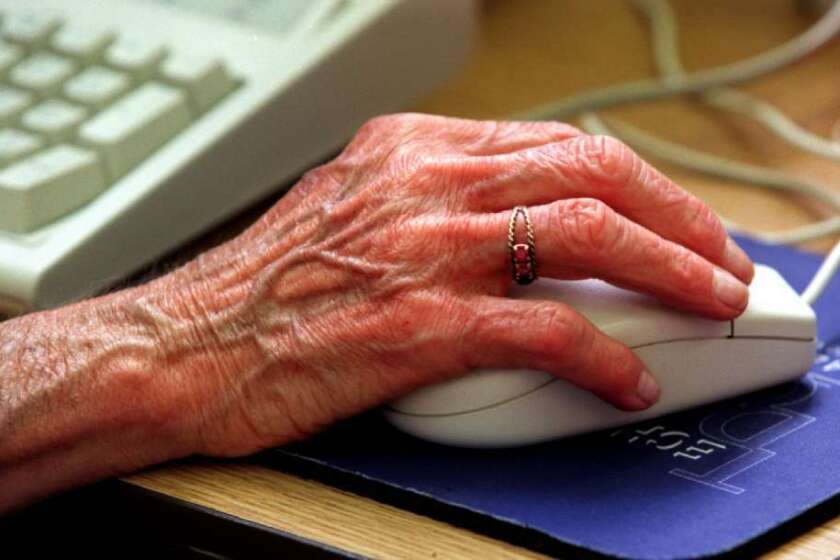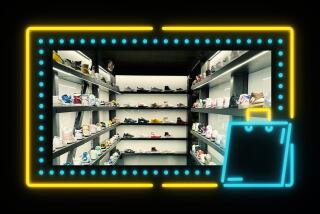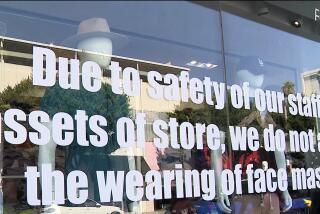As small L.A. retailers await coronavirus reopening, the landscape is bleak
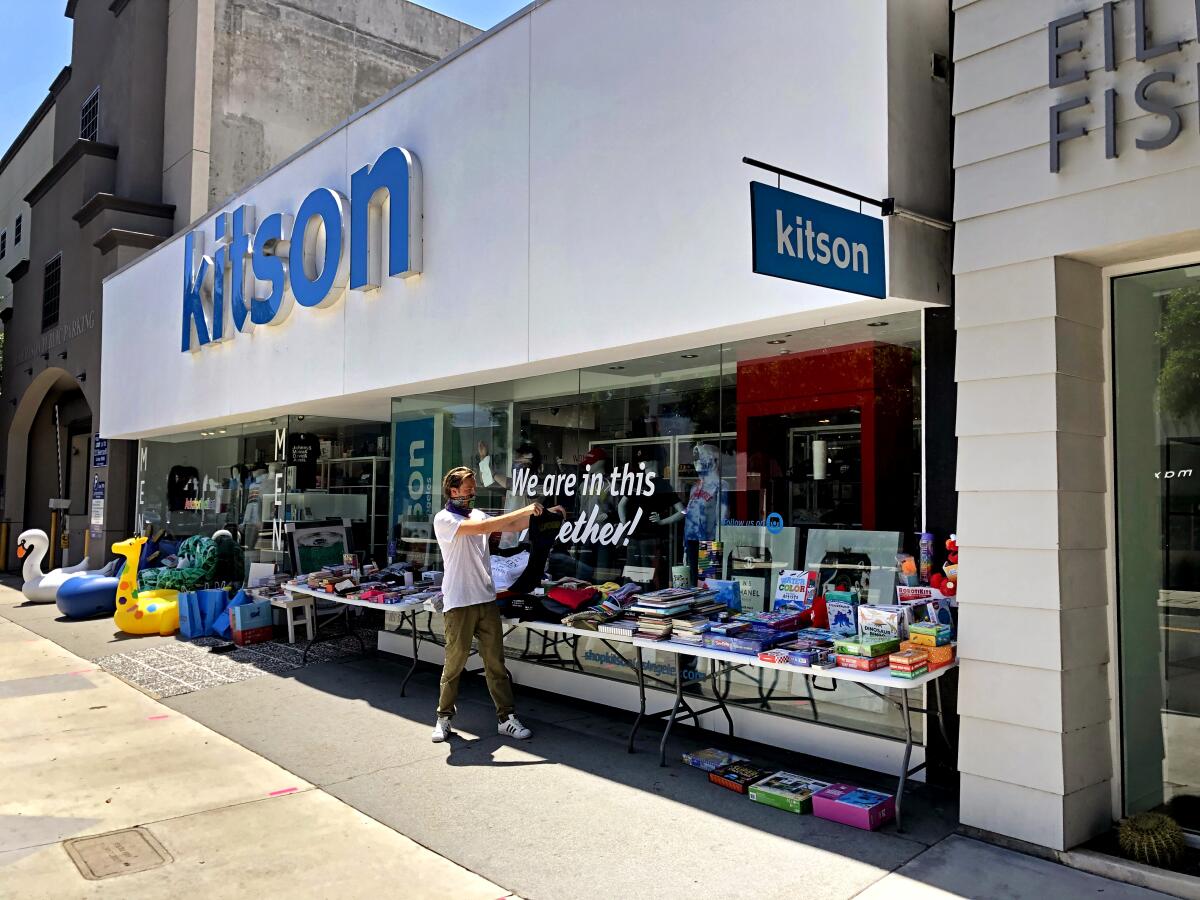
- Share via
For small-business owners, the steps toward opening their doors again after coronavirus lockdowns are welcome — but far from easy.
Two small Los Angeles merchants who could rattle off the names of celebrity clients from the days before COVID-19 are finding that walk-in shoppers have mostly become walk-by shoppers. Although some areas of the state are loosening coronavirus restrictions, Los Angeles County’s in-store shopping is still largely limited to food and other essential businesses.
Kitson on Robertson Boulevard was the quirky clothing and gift seller that wouldn’t die. Little Trendz sold its hip children’s clothing in competition with mega-chains that had lobbies bigger than the retailer’s single Sherman Oaks store.
Now, tourism dollars are gone. Online traffic isn’t strong enough to make up for the loss of in-store sales. Some employees are afraid to return to work.
All of it leaves Kitson with, at best, 15% of its former revenue stream. Little Trendz has had only a handful of customers in the last week.
“It’s like trying to start a business from scratch, when you don’t know what you’re going to sell, or to who,” said Fraser Ross, owner of Kitson, who reopened his store to curbside service on May 8.
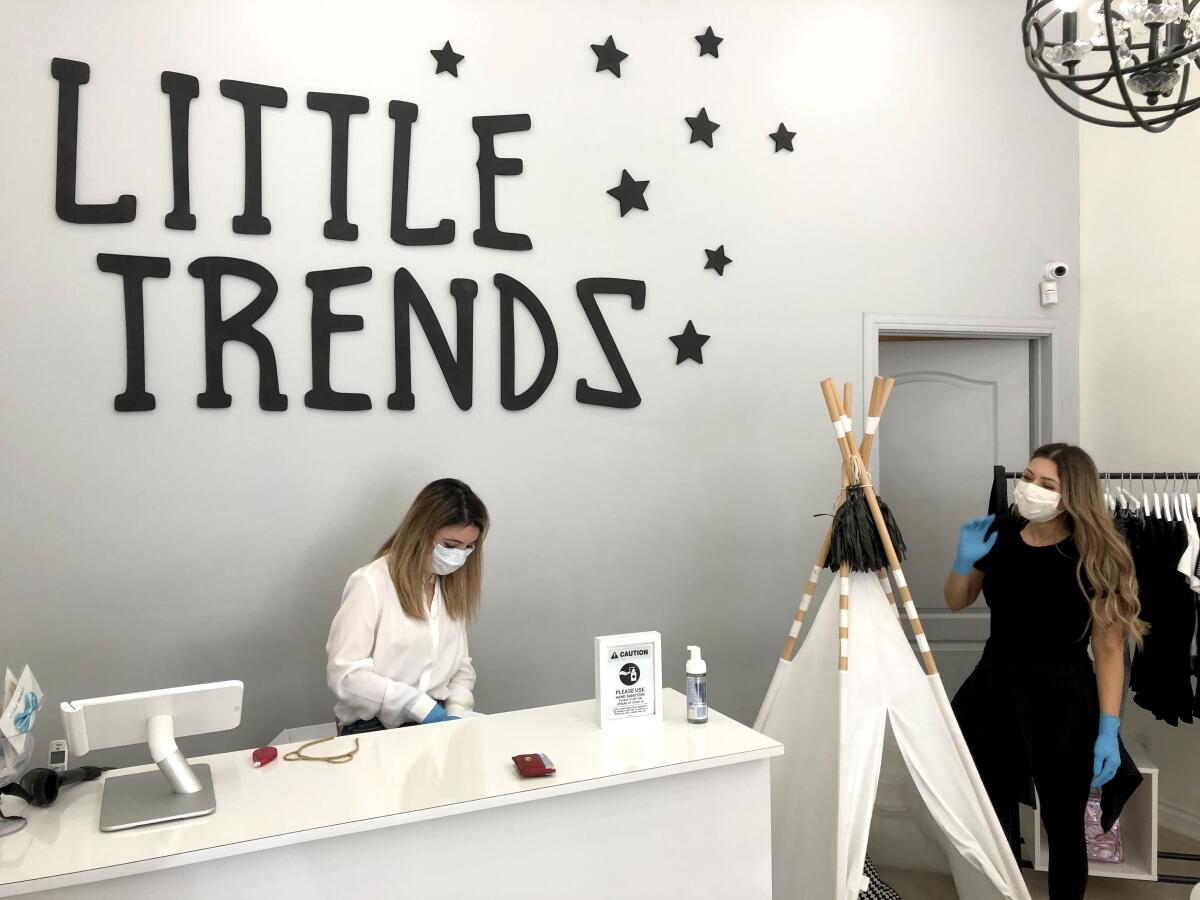
Sara Petikyan, owner of Little Trendz, is happy to be back in her store again but knows that the road ahead will be difficult.
“Nobody’s interested in buying a T-shirt for their kids when they’re worried about feeding their family or finding a job,” she said. “So I understand why we have very little income. This is a struggle.”
Lars Perner, an assistant professor of clinical marketing at USC Marshall School of Business, said businesses have never faced such a mixture of negative and contradictory forces.
“It’s a very different situation businesses are facing, very surreal,” said Perner, whose specialties include consumer behavior and how shoppers react to price changes.
“The people who still have jobs have sometimes taken pay cuts or are very worried about how much longer they will have them. And there is still so much fear around the virus that there can be a kind of social disapproval of the risk of going out to shop somewhere for things you really don’t need,” he said.
Kitson opened on designer-studded Robertson Boulevard in 2000, becoming a go-to spot for paparazzi to grab shots of young celebrities. The brand survived two recessions and an expansion — some said overexpansion — to 17 locations. In late 2015, new management began liquidating Kitson’s brick-and-mortar stores and e-commerce operation.
Ross had left Kitson before the unexpected closure, which brought a flurry of lawsuits by all parties. In 2016, Ross launched a comeback, opening another pop-culture-flavored store, which he dubbed Kitross, at the original Robertson location. Eventually, the operation became Kitson again.
Kitson’s business model capitalizes on the impulse buy, with an eclectic array of items ranging from original artwork that can sell for a few thousand dollars and cashmere sweaters for $600 to greeting cards that sell for $5.95.
The pandemic has been a blow, Ross said, combining the dangers of the virus with the stay-at-home shutdown that closed his physical stores as nonessential businesses, even as big chains such as Target and Walmart were able to continue selling gifts and other items along with the necessities consumers couldn’t do without.
“They shouldn’t have been allowed to do that when we couldn’t,” Ross said. “We can practice social distancing in retail as well as anyone else.”
Older people and those with preexisting medical conditions face greater risk from the coronavirus. How will they return to work as businesses reopen?
On a recent weekday, Kitson and the nearby Kitson Kids store were the only establishments on the block open for curbside business, leaving Robertson Boulevard looking mostly deserted, except for some light vehicular traffic that would have been inconceivably sparse before the virus. Kitson’s outlet store and a Beverly Hills pop-up store haven’t reopened.
“It’s not great, but every little bit helps in sales, from curbside to internet,” said Ross, who added that he was averaging nearly 30 curbside customers a day. “But I don’t know what the outcome will be at the end of this. It’s just like, it’s a new world, and we’re just adapting as we ... go along, and with what we’re allowed to do and what we’re not allowed to do.”
Unsold inventory has been an additional problem, Ross said.
“We would normally sell out of Mother’s Day cards every year, and I just packed up 500 of them. Easter? I packed those things up,” Ross said, now wondering whether he will have to do the same next month for Father’s Day.
“Pool floats, actually, I’ve been doing well with those, because people are stuck in their homes, and so we’re going to have some hot hit items. But other than that, I don’t know what will sell and what won’t,” Ross said. Puzzles for adults and items to keep youngsters occupied have also been popular.
Some Kitson workers are thrilled to be back. One was salesman Tom Ernst, who walked back and forth in front of the store, properly masked, making sure the merchandise set outside to attract customers was set just so. It didn’t seem to matter that business was extremely slow.
“It’s been so great to be back to work,” Ernst said. “To be able to have a place to go, where you feel like someone needs you.”
Ross said some employees are leery about face-to-face work with customers. He said he has seven employees back at work, and three more will return June 1, now that Kitson has received federally sponsored Paycheck Protection Program funding.
“We have 23 employees between our four stores, with stock people, managers,” Ross said. “So, we’ve got two working on internet, one person working outside for customers, one stock person and then tomorrow we’ll bring back the Instagram people and more web people.”
Some families are unwilling to see loved ones return to retail jobs so soon, as is the case for 17-year-old Julie Kartashyan, who would normally be working at the Little Trendz children’s boutique.
“My mom doesn’t want me to go back to work just yet,” Kartashyan said. “That’s because she’s read articles or heard news about how the virus might still be around in August.”
As April rolled into May, Kartashyan’s mother said she might consider letting her return around May 15, but that date has come and gone without approval.
“And that’s even though she knows my store is small and kept very clean,” Kartashyan said. “My mom is not as worried as she would be if I was going back to work at a big store; she definitely would not even consider it then.”
Bosses find themselves in a delicate position as well. Petikyan, the 33-year-old owner of Little Trendz, said she would hold Kartashyan’s job for her for as long as it takes to get her back.
“That’s all we can do for now, which is to make sure she knows she still has a job,” said Petikyan, who normally employs five workers. She applied for government-backed emergency PPP funding but said she never heard back from the lender.
“One thing I want to make sure of is that my employees feel comfortable prior to returning,” Petikyan said. “I want them wanting to go back to work. We want our employees and our customers to feel safe. We provide masks and gloves. We provide sanitizers, and no one is allowed to enter the store without a mask.”
Petikyan opened Little Trendz in late 2016 in a 750-square-foot space on Ventura Boulevard. The store did well from the start, she said, as the only retail establishment within several blocks that focused on trendy, European and street-style clothing for young children.
“We had the older-age women that came in looking for things for their grandchildren. A lot of people came in just because the window attracted them. We were just something different,” Petikyan said. “We had moms with strollers walking by. They saw the store, came in, referred their friends. So it did pretty well.”
Petikyan brought her sister Arpine, who is 34, into the business to provide some expertise she gained in retail management positions over several years, including at Michael Kors.
“It was something, a dream of both of ours that came together,” Arpine Petikyan said.
Little Trendz stocks jackets that sell for about $100 and T-shirts with cheeky sayings such as “I’m so Prada” and “#swag” that cost $24.99 to $32.99. There’s a new line of COVID clothing, including a shirt proclaiming: “Please stay 6 feet away.”
By 2019, larger chains had picked up on the popularity of urban street wear for children and, in some cases, even offered the same brands at competitive prices, the sisters said. But that was nothing compared to being told in March that Little Trendz could sell only online — a disaster for a store that had relied on foot traffic for 80% of its business.
“In this neighborhood, having a lot of people buying things for Passover and Easter makes March our second-biggest month for sales, behind December,” Sara Petikyan said. “So we were suddenly looking at big numbers, big sales losses.”
E-commerce has kept the store going, and the sisters believe that if they can get just two walk-up customers a day to add to their online sales, they will be able to ride out the virus’ effects on business. The store has a sign encouraging shoppers to call or text if they see merchandise that interests them through the shop’s large picture windows or on its social media accounts.
“Foot traffic outside has begun to pick up,” but no one has approached them to make a purchase, she said. “It’s very tough.”
More to Read
Inside the business of entertainment
The Wide Shot brings you news, analysis and insights on everything from streaming wars to production — and what it all means for the future.
You may occasionally receive promotional content from the Los Angeles Times.
